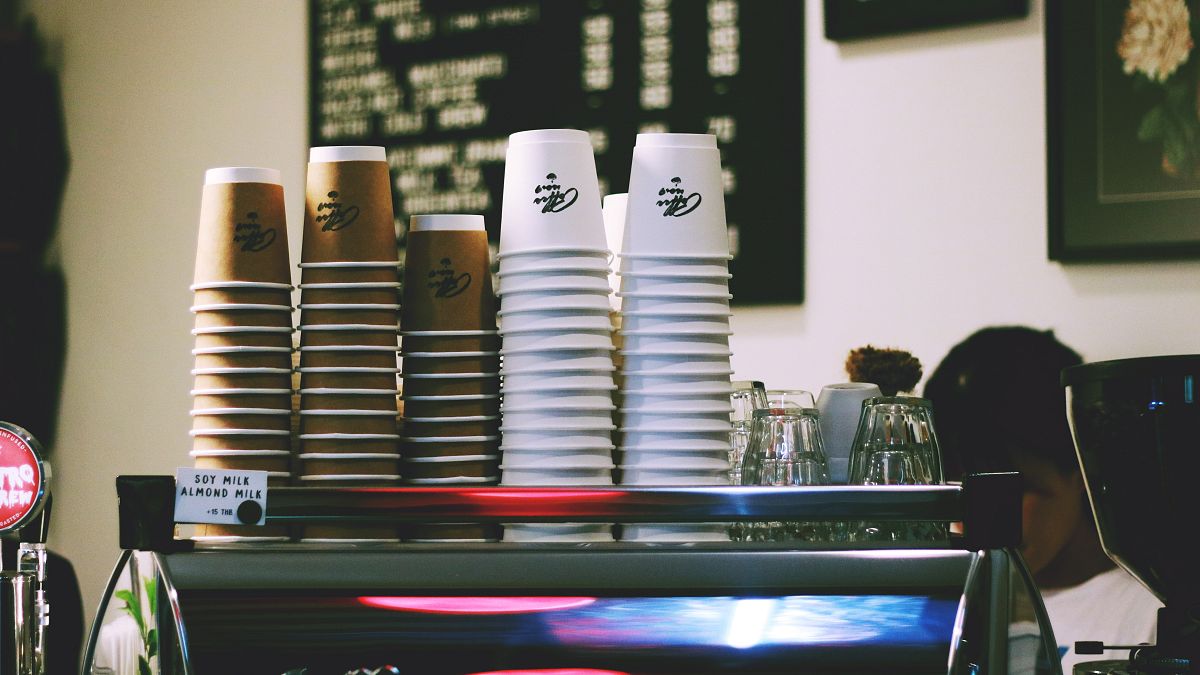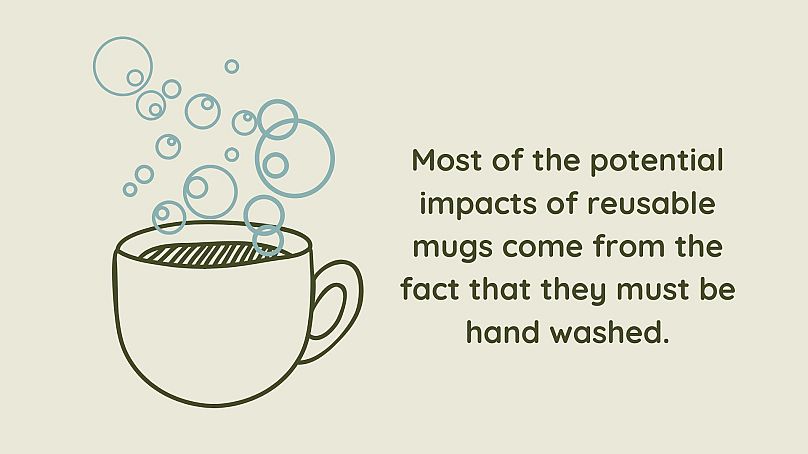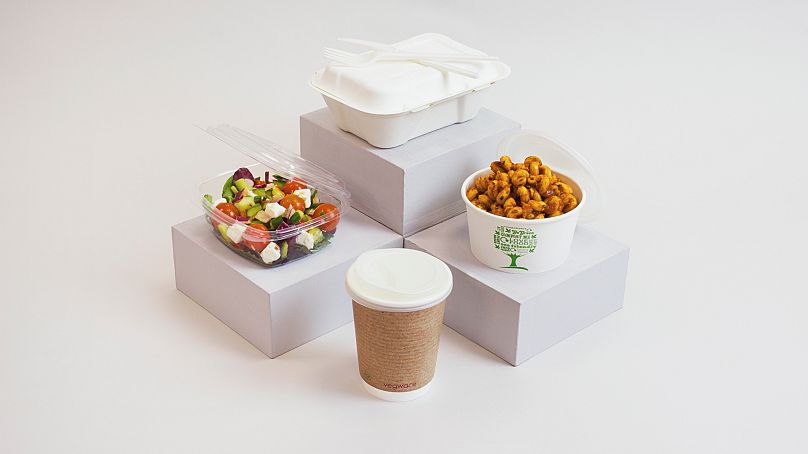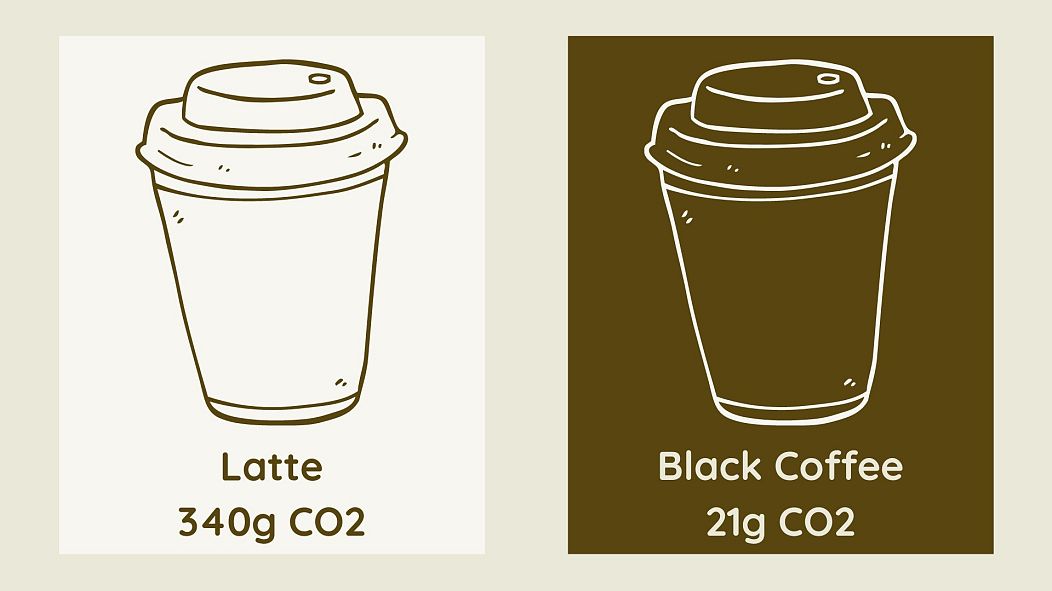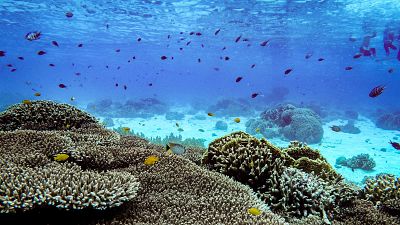There is the capacity for all the paper cups we use to be recycled in the UK. The problem is that customers don’t put them in the right bins.
Worldwide we drink over 1.6 billion cups of coffee every day. From strong, dark espressos to creamy egg-based cà phê trứng, the planet runs on this bitter, caffeinated drink.
In Western Europe in particular, we have become increasingly fond of coffee shop culture with nearly 5 percent of all cafes focused on serving the bean-based beverage alone. The UK is one of Europe’s largest consumers and one in five Brits visit a coffee shop every day leading to 2.5 billion disposable cups being thrown away each year according to a report by the UK Government.
Takeaway cups are made from paper, though, so surely this waste problem can easily be solved with recycling? Sadly not. In order to stop your drink from leaking out all over your clean white shirt, a thin plastic lining is added to the inside of the cup making them impossible to process in a conventional paper recycling mill. As a result, most are either simply sent to landfill or incinerated.
Environmental impacts from unsuspecting places
As we have become increasingly aware of this environmental impact, many of us have switched to carrying a reusable cup instead. Despite the hype and hundreds of chic brands bringing out beautifully designed options, only five percent of coffees bought aren’t taken away in a paper receptacle, however.
A look at the lifecycle of reusable and single-use options carried out by CIRAIG in Quebec, Canada found that you would have to bring your own cup for your daily coffee somewhere between 20 and 100 times for it to have the same environmental impact as a paper one. Compared to other supposedly eco-friendly alternatives like ‘bags for life’, that isn’t too bad at one coffee a day for just over 3 months.
It matters what kind of cup you buy, however, as plastic versions use fossil fuels and are difficult to properly dispose of once they break or degrade. The lifecycle study recommends that the best travel mug to choose is one that is lightweight, durable and preferably made of stainless steel.
One of the biggest contributors for environmental impact, when it came to reusable cups, was having to wash them. Dishwashing, through water use, detergent, energy and wastewater processing, makes up 90 per cent of the life cycle emissions of a reusable cup.
You are best to give your mug a quick rinse in cold water after you finish your drink as hot water and soap make up a significant percentage of its lifetime environmental impact.
Ceramic cups are by far the best option and should always be your choice if you are drinking your coffee in a restaurant or sitting in a cafe. It takes hundreds of uses before their impact is smaller than a paper cup but this isn’t hard in a cafe environment where they are in constant rotation.
Is there another way?
It is convenience that usually prevents us from breaking our addiction to disposable paper cups. We don’t always have the time to sit down in a coffee shop and reusable choices require a certain amount of preplanning.
“Coffee to go is frequently a spontaneous purchase rather than a pre-meditated one,” says the Paper Cup Recovery and Recycling Group (PCRRG), “some consumers also prefer not to carry a reusable cup, either because they don’t carry a bag with them, or they are worried about contamination from a dirty cup.” If we won’t stop buying our drinks in single-use cups, then perhaps it’s better to instead consider where they go when we are done with them.
They explain that, in the UK at least, there is the capacity for all the paper cups we use to be recycled, the problem is that as customers we don’t put them in the right bins. “Cups also need to be in good condition when they are recycled,” the PCRRG says, adding that we need to stop using them as “mini-bins” to shove all of our other waste into.
With changes to recycling processes, the plastic film that makes them a problem can easily be removed and although more complex than conventional paper processing, pulping them is not impossible. The “high-quality paper fibres” can then be turned into something new by companies like PCRRG member James Cropper's CupCycling™ which makes luxury papers and greetings cards. Selfridges has even started to take back coffee cups from its cafes to turn them into their iconic yellow bags, proof that they can be a useful source for material to reuse.
Composting your cup
A recent open letter sent to The Guardian by politicians and materials experts suggested that packaging that compostable packaging could help “shift away from the inefficient mechanical recycling stream, into a nature-based solution that can be safely returned to the earth”. Plant-based packaging company, Vegware, creates cups made from sustainably sourced paper with a lining made from renewable materials that can be composted after use.
It sounds like the perfect solution but they can’t just be put out with your usual garden waste. Vegware and other similar degradable cups have to be commercially composted. In some places like the Republic of Ireland, it is already possible as waste like Vegware’s plant-based packaging is collected from homes with ordinary organic recycling. Around 40% of UK homes currently have access to similar services.
“Compostables are a practical solution for single-use food-contaminated disposables, allowing foodservice to achieve their sustainability goals,” a representative from the company explains, “Plus, it produces an excellent end-product, compost.” A great option, no doubt, but one that requires more education and investment to ensure these cups don’t end up in landfill like their plastic-based predecessors.
The cup might not be our planet's biggest enemy
What you drink it from, however, might not be coffee’s biggest environmental issue. Packaging generally only represents 4 percent of its total carbon footprint according to Finnish packaging experts, Huhtamäki.
A staggering 73 percent of a single cup’s carbon footprint is the milk meaning that ditching dairy might be a better answer to reducing the overall environmental impact of your caffeine addiction.
A University of Oxford study found that dairy emitted almost three times as much greenhouse gasses as any of the common plant-based alternatives. If you want an option that uses less land and water whilst emitting minimal CO2 then choose soy or oat milk in your morning coffee. With a whole slew of barista approved options now available, a dairy-free coffee isn’t the lumpy soya milk disaster it used to be.
So, instead of rushing off with a double shot flat white in a takeaway cup, it seems that the best change you can make might be to take a minute to sit down, relax and sip your oat milk latte from a ceramic mug.
